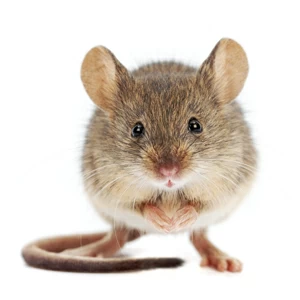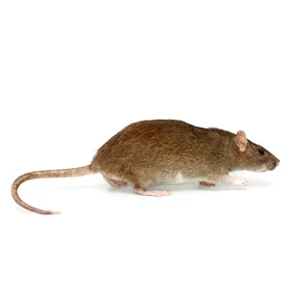Rodents invading your home are more than simply an annoyance. They cause property damage by piercing the exterior of your structure and can even gnaw through electrical lines, posing a serious threat to the homeowner's safety. They can also contaminate stored food and act as disease vectors, transmitting diseases such as the plague, typhus, salmonellosis, rat-bite fever, and hantavirus, to mention a few.
Rodent control can be difficult, and eradicating the problem requires a multi-tiered approach. Your ProPest mice and rodent control professional will assess your structure to determine the extent of the infestation, make recommendations for or implement corrective action plans, and install the necessary control measures to quickly eliminate the problem. ProPest can help you reclaim your house with our rodent control services.

House Mouse
Color: Brownish to dark gray above with lighter gray or cream color underneath
Legs: 4
Size: 6.35 – 8.89 cm with tail length of 6.98 – 10 cm
Identifying Characteristics: Moderately large ears; short, broad feet; small eyes; nearly hairless tail; pointed muzzle
Characteristics of this insect:
- Droppings average 0.6 cm in size, rod-shaped and with pointed ends. Fresh droppings are dark and soft, while older droppings may be dull and hard. Can average about 50 droppings per day
- Prolific breeders. Under ideal conditions, the each female house mouse may produce as many as ten liters (about 50 young) in a year. They are sexually mature in little over a month
- Mice are very social, but are territorial. They can show aggression to those that enter their territory
- Have poor vision and are colorblind. They have keen sense of smell, taste, touch and hearing, as well as a great sense of balance
- The house mouse searches for food high in fat and protein. This includes lard, butter, nuts, bacon, meats, sweets, and chocolate. Mice get most of their water from the food they consume, but will drink if water is readily available
- Other attributes: great jumpers; can run up walls if surface is rough; can squeeze into openings ¼ inch in size; capable swimmers; can survive a constant -5 degrees Celsius for 10 generations
- One pair of mice can eat 4 pounds of food, deposit about 18,000 droppings, and void about 12 ounces of urine over a 6-month period of time. They contaminate 10 times the amount of food compared to what they eat

Norway Rat
Color: Fur is coarse, shaggy, with mainly brown hair and some scattered black hairs
Legs: 4
Size: Adults measure 17 to 22 cm in length, with a 15 to 20 cm tail
Identifying Characteristics: Possess small eyes and ears; blunt muzzle
Characteristics of this insect:
- Droppings average 1.9 cm in size, capsule-shaped and have 1 blunt end. Fresh droppings are black or nearly black. They may look wet and have the texture of putty. Older droppings may become dry, hard, and appear dull. Can average about 30-180 droppings per day and 88 ml of urine
- Prolific breeders. Under ideal conditions, the each female rat may produce as many as 3 to 6 liters (about 20 young) in a year. They are sexually mature in 2 to 5 months. The female rat lives longer than the male rat, with the average life span between 6 and 12 months
- Rats are social animals and live in colonies. They are territorial and have a “pecking order” of dominance. Rats are aggressive and will vigorously defend territory and young. Rats commonly travel 30 to 45 meters from their nests looking for food and water and patrolling their territory. They are neophobic, as they are wary of anything new in their territory. New objects will be avoided until they become familiar with them
- Have poor vision. They have keen sense of smell, taste, touch and hearing, as well as a great sense of balance
- Rats prefer protein-based foods. This includes meat, fish, insects, pet foods, nuts, grain, and household garbage. Rats need water every day. Rats need 14 to 29 ml per day, although this amount will vary depending on the moisture content of their food
- Other attributes: can jump 90cm straight up or 1.21 cm. horizontally; climb inside pipes 3.8cm to 10cm in diameter; gnaw constantly; swim 805m in open water, tread water for three days, swim against a strong current in a sewer line, and dive through a sewer trap to come up inside your toilet; can fall 15 and survive
- It is estimated that rats destroy 20% of the world’s food supply every year by direct feeding or indirect contamination
feel free to contact our team.
